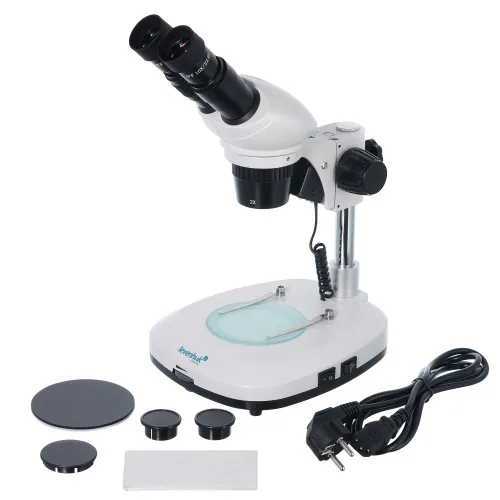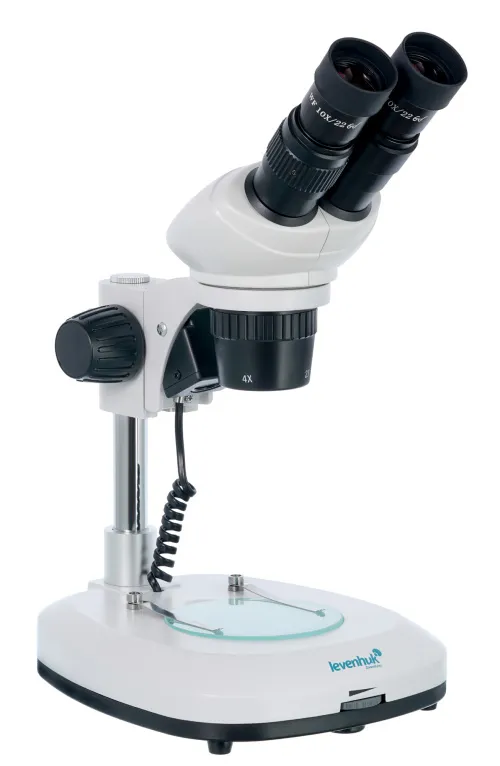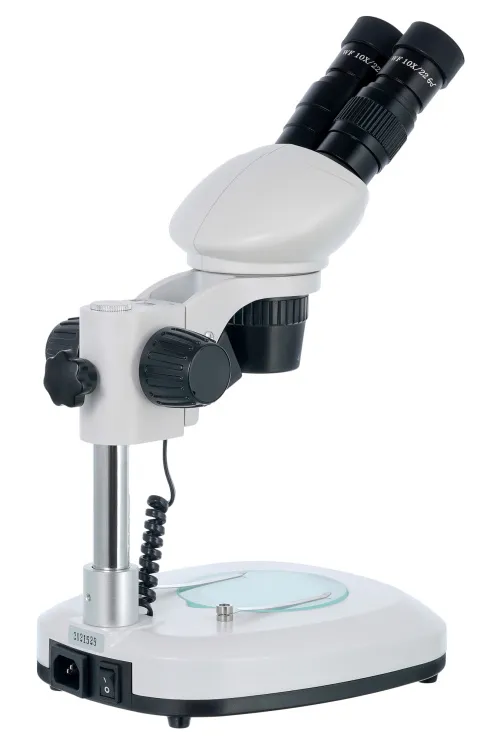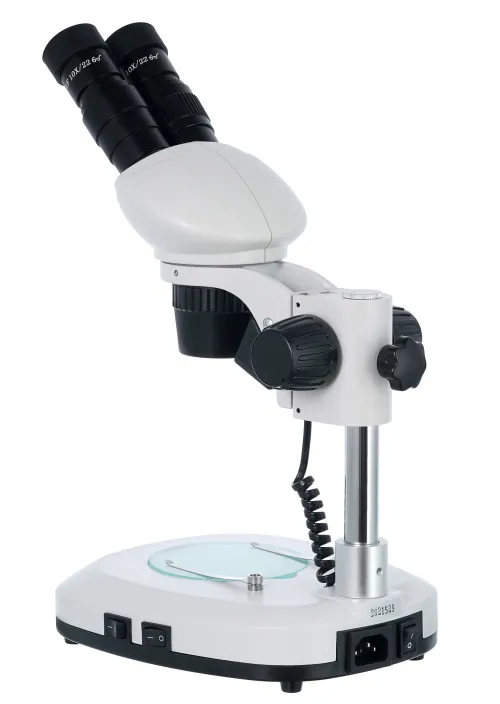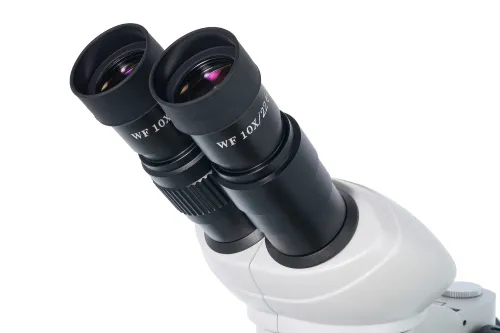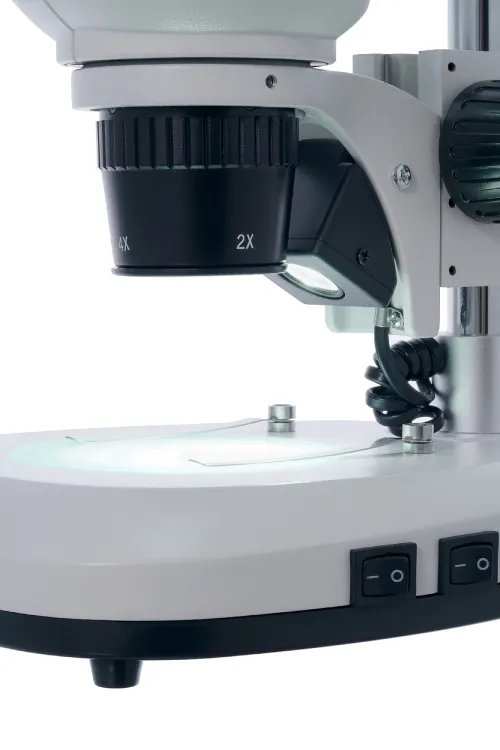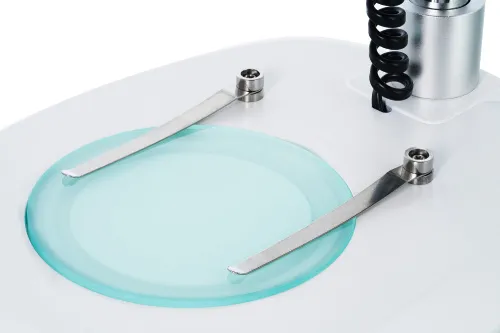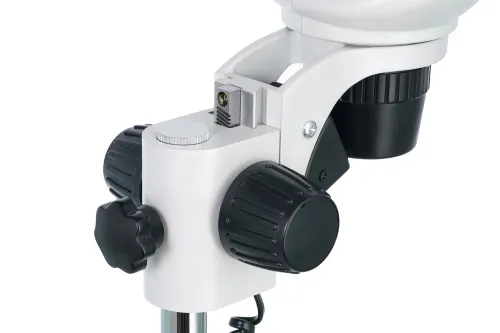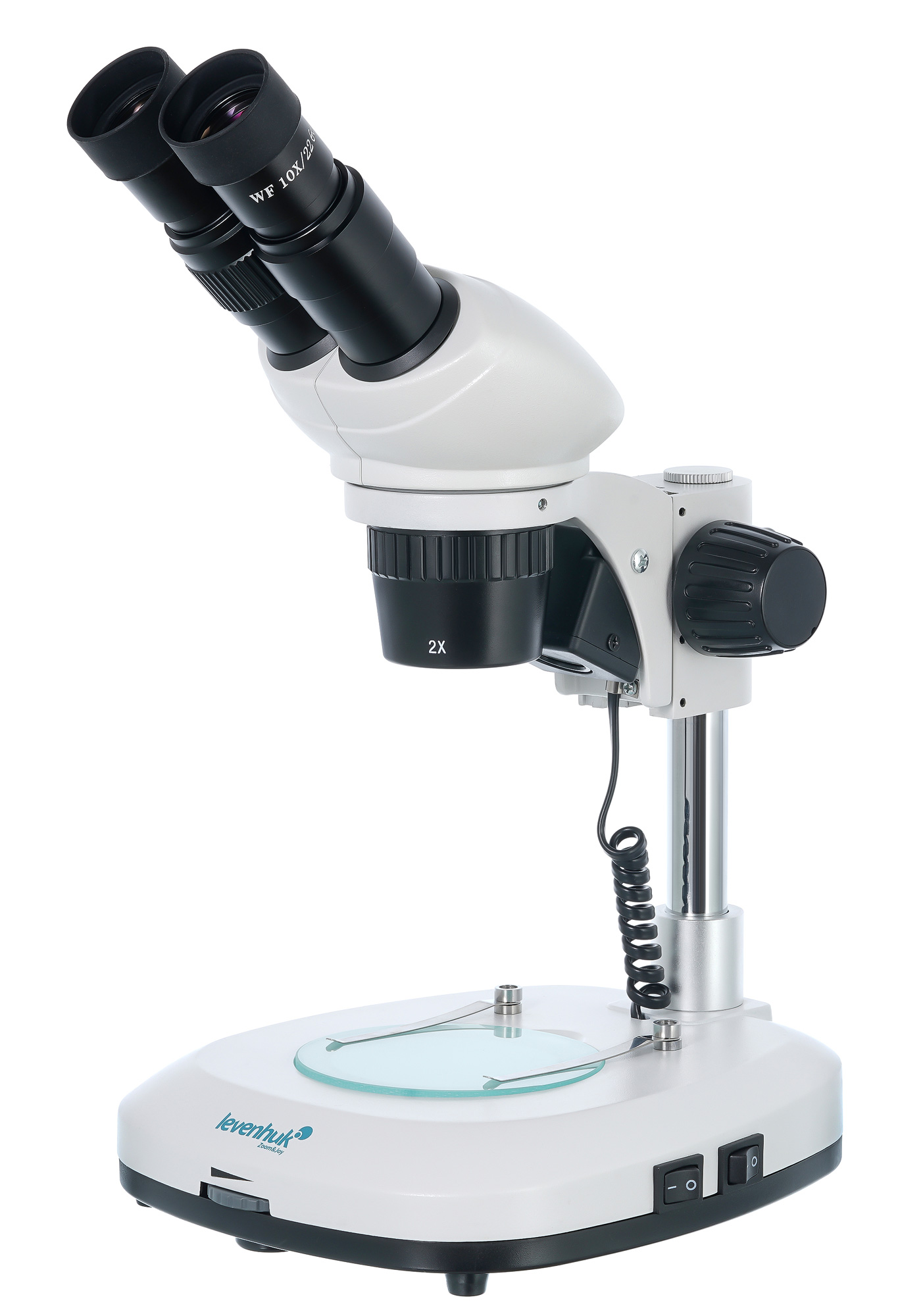Levenhuk 4ST Binocular Microscope
Magnification: 20–40x. Stereo microscope with a 130mm working distance
| Product ID | 76055 |
| Brand | Levenhuk, Inc., USA |
| Warranty | lifetime |
| EAN | 5905555004570 |
| Package size (LxWxH) | 38x25x33 cm |
| Shipping Weight | 3.52 kg |
The Levenhuk 4ST Binocular Microscope is a classic stereoscopic microscope for working with nonplanar objects. It can be used for studying geological and biological samples, small machinery parts, textiles, coins, and art objects. Its simple operation makes this model a good choice for home use. Thanks to its excellent mechanical and optical qualities, the microscope is highly-demanded among specialists of various professions.
The microscope optics are made of glass, the objective provides two magnifications: 2 and 4 times, wide-field eyepieces zoom in 10 times. An overall magnification range varies from 20x to 40x. A coarse focusing adjustment is available. A binocular head is slightly angled, which allows for conducting very comfortable, lengthy observations. If necessary, the head can be rotated 360°.
Two lights are used for illuminating the samples: an upper and lower light. Both lights are LEDs with brightness adjustment. The lighting is powered by an AC power supply. This lighting system allows you to study samples of any degree of transparency: opaque, semi-transparent, and transparent.
Features:
- Instrumental microscope that creates a three-dimensional image
- Angled binocular head rotates at 360°
- Magnification in the range of 20x to 40x, working distance: 130mm
- Upper and lower LED lights with brightness adjustment
- AC power supply
The kit includes:
- Microscope
- Wf10x eyepieces with eyecups (2 pcs)
- Rotatable objective: 2x, 4x
- Stage made of matte glass
- Black-and-white double-sided plate
- Power cord with an AC adapter
- Dust cover
- User manual and lifetime warranty
Caution: Please refer to the specifications table for the correct mains voltage and never attempt to plug a 110V device into 220V outlet and vice versa without using a converter. Remember that mains voltage in the U.S. and Canada is 110V and 220–240V in most European countries.
| Product ID | 76055 |
| Brand | Levenhuk, Inc., USA |
| Warranty | lifetime |
| EAN | 5905555004570 |
| Package size (LxWxH) | 38x25x33 cm |
| Shipping Weight | 3.52 kg |
| Type | stereo/instrumental |
| Microscope head type | binocular |
| Optics material | optical glass |
| Head | 360 ° rotatable |
| Head inclination angle | 45 ° |
| Magnification, x | 20 — 40 |
| Eyepiece tube diameter, mm | 30 |
| Eyepieces | WF10x/22mm (2 pcs.) |
| Objectives | 2x–4x (zoom) |
| Working distance, mm | 130 |
| Interpupillary distance, mm | 55 — 75 |
| Stage, mm | Ø95 |
| Stage moving range, mm | fixed |
| Stage features | two plates: black and white double-sided and matte glass, with clips |
| Eyepiece diopter adjustment, diopters | ±5 |
| Focus | coarse: 35mm |
| Body | metal |
| Illumination | LED |
| Brightness adjustment | ✓ |
| Power supply | 220V/50Hz |
| Light source type | upper: 1W LED, lower: 2W LED |
| Operating temperature range, °C | 5...+35 |
| User level | beginners |
| Assembly and installation difficulty level | extremely simple |
| Application | for applied research |
| Illumination location | dual |
| Research method | bright field |
| Pouch/case/bag in set | dust cover |
We have gathered answers to the most frequently asked questions to help you sort things out
Find out why studying eyes under a microscope is entertaining; how insects’ and arachnids’ eyes differ and what the best way is to observe such an interesting specimen
Read this review to learn how to observe human hair, what different hair looks like under a microscope and what magnification is required for observations
Learn what a numerical aperture is and how to choose a suitable objective lens for your microscope here
An interesting review on how such microscopes work, form the 3D image and in what fields they are applied
Learn what a spider looks like under microscope, when the best time is to take photos of it, how to study it properly at magnification and more interesting facts about observing insects and arachnids
This review for beginner explorers of the micro world introduces you to the optical, illuminating and mechanical parts of a microscope and their functions
Short article about Paramecium caudatum - a microorganism that is interesting to observe through any microscope


